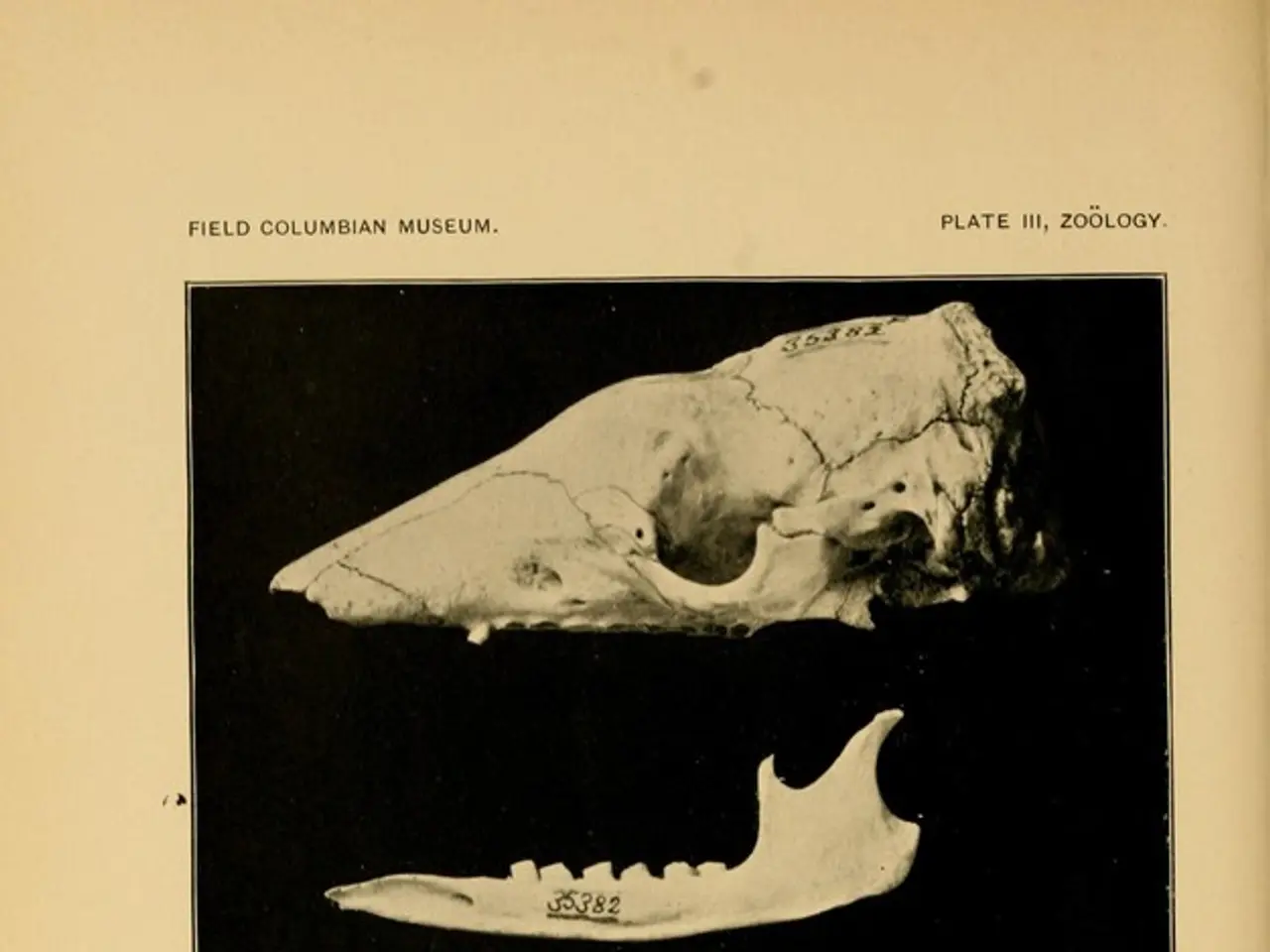Surgical Approach for Talus Bone Breaks: Circumstances Justifying Open Reduction and Internal Fixation (ORIF)
Talus fractures, while less common than other ankle injuries, can significantly impact an individual's mobility and overall physical activity. These injuries are particularly noteworthy due to the talus's critical role in ankle and hindfoot movement and weight bearing.
Types of Talus Fractures
Talus fractures are primarily classified by their location. The most clinically significant are talar neck fractures, which are further categorised using the Hawkins classification system.
The Hawkins Classification of Talar Neck Fractures
- Type I: Nondisplaced vertical fractures of the talar neck with no dislocation or subluxation. These have a low risk of avascular necrosis (AVN), less than 15%.
- Type II: Fractures with subluxation or dislocation of the subtalar joint but the ankle joint remains congruent. The risk of AVN is higher than Type I.
- Type III: Fractures with dislocation of both the subtalar and tibiotalar joints, posing an even higher risk of AVN.
- Type IV (added later): Involves dislocation of the subtalar, tibiotalar, and talonavicular joints, associated with the highest risk of AVN and a worse prognosis.
In addition to talar neck fractures, other types of talus fractures include talar body fractures, talar head fractures, and osteochondral lesions.
Associated Risks of Talus Fractures
Given the talus's limited blood supply, particularly with displaced neck fractures, there are several potential complications. These include:
- Avascular necrosis (AVN): Due to the risk of bone death and collapse, especially with displaced neck fractures (Hawkins II-IV).
- Post-traumatic arthritis: Damage to cartilage, particularly in the subtalar and tibiotalar joints.
- Nonunion or malunion: Improper healing can impair ankle and foot function.
- Chronic pain and limited ankle mobility.
Treatment and Recovery
Fractures require a comprehensive management plan, including clinical evaluation, imaging, surgical procedures, and physical therapy. One such surgical procedure is open reduction and internal fixation (ORIF), which is used for severe and complicated talus fractures.
ORIF involves open reduction (assessment and realignment of fractured bones) and internal fixation (application of fixation components like screws, plates, or pins). However, surgical treatments for talus fractures have the potential for less successful remodeling, leading to major complications such as infection, non-union (failure of the bone to heal), malunion (healing in an incorrect position), and loss of ankle mobility.
Patients usually remain non-weight bearing for 6-8 weeks after ORIF for a talus fracture. A gradual return to sports or normal physical activity is advised for patients after talus fracture surgery, but full recovery may take several months.
In summary, talar fractures are categorised mainly by location and displacement severity, with the Hawkins classification being central for neck fractures, reflecting higher AVN risk and complication rates with increased displacement and dislocation. Proper treatment and recovery require a comprehensive approach, taking into account the potential risks and complications associated with these injuries.
- Talus fractures can impact an individual's mobility and overall physical activity, making them a noteworthy medical-condition.
- These fractures are classified by their location, with talar neck fractures being the most clinically significant.
- The Hawkins classification system categorises talar neck fractures, distinguishing between four types.
- Type I talar neck fractures are nondisplaced vertical fractures with a low risk of avascular necrosis (AVN).
- Type II fractures have a higher risk of AVN due to subluxation or dislocation of the subtalar joint.
- Type III fractures pose an even higher risk of AVN as they involve dislocation of both the subtalar and tibiotalar joints.
- Type IV fractures, added later, are associated with the highest risk of AVN and a worse prognosis.
- Other types of talus fractures include talar body fractures, talar head fractures, and osteochondral lesions.
- Given the talus's limited blood supply, there are potential complications with talus fractures, such as AVN.
- AVN is the risk of bone death and collapse, especially with displaced neck fractures (Hawkins II-IV).
- Post-traumatic arthritis can develop due to damage to cartilage, particularly in the subtalar and tibiotalar joints.
- Nonunion or malunion can impair ankle and foot function.
- Chronic pain and limited ankle mobility are potential complications of talus fractures.
- Fractures require a comprehensive management plan, including clinical evaluation, imaging, surgical procedures, and physical therapy.
- One such surgical procedure is open reduction and internal fixation (ORIF), used for severe and complicated talus fractures.
- ORIF involves open reduction and internal fixation.
- Internal fixation includes the application of fixation components like screws, plates, or pins.
- Surgical treatments for talus fractures have the potential for less successful remodeling, leading to complications.
- Complications include infection, non-union (failure of the bone to heal), malunion (healing in an incorrect position), and loss of ankle mobility.
- Patients usually remain non-weight bearing for 6-8 weeks after ORIF for a talus fracture.
- A gradual return to sports or normal physical activity is advised for patients after talus fracture surgery.
- However, full recovery may take several months.
- Talar fractures, particularly neck fractures, carry a higher risk of AVN, requiring careful evaluation and treatment.
- In the realm of science and healthcare, understanding talus fractures contributes to advancements in medical-conditions like chronic-kidney-disease or chronic-diseases.
- The manufacturing industry can incorporate this knowledge into the design and production of healthcare gadgets, such as smartphone applications or wearables that monitor bone health.
- Neurological-disorders, such as Alzheimer's disease or autoimmune-disorders, can impact a patient's response to talus fracture treatment, necessitating collaboration between healthcare professionals and environmental-science experts.
- Climate-change, with its potential impacts on public health and the economy, intersects with healthcare in various ways, including the incidence of respiratory-conditions, digestive-health issues, eye-health problems, and skin-conditions.
- As talus fractures highlight the importance of physical health, understanding them can inspire a commitment to overall lifestyle changes, promoting outdoor-living, sustainable-living, and a focus on nutrition, cooking, and home-and-garden activities.




